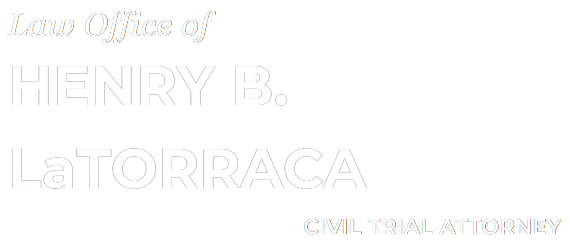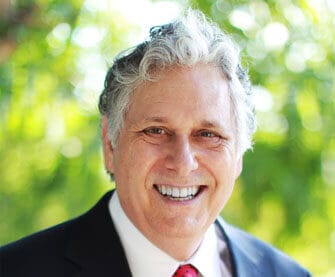On June 18, 2009, the Supreme Court of the United States handed down its 5-4 decision in Gross v. FBL Financial Services, Inc., ___ U.S. ___; 2009 WL 1685684.
Jack Gross filed an age discrimination case against his employer, FBL Financial Services, Inc., claiming that he was demoted because of his age pursuant to the federal Age Discrimination in Employment Act of 1967, 29 U.S.C. §621 et seq. (hereinafter, “ADEA”), which makes it unlawful to discriminate against an employee on account of age. 29 U.S.C. §623(a).
There was evidence that the employer had mixed motives for demoting Mr. Gross, at least one of which was permissible and unrelated to the age discrimination claim.
Gross sought to prove his case by showing that age discrimination was at least one of the motivating factors, even if there were other non-discriminatory reasons for his demotion.
The Supreme Court, however, decided that Mr. Gross was required to prove that “but for” his employer’s age discrimination, he would not have been demoted and that the burden of persuasion did not shift to the employer to prove that the demotion was motivated by permissible reasons, even if the employee produces some evidence of age discrimination, as would have been the case if an employee brought a lawsuit pursuant to Title VII of the Civil Rights Act of 1964 (42 U.S.C. §§2000e et seq.) for race, color, religion, sex or national origin.
The Supreme Court noted that the language of the ADEA prohibited an employer’s adverse employment action “because of” age, i.e., the “reason” for that adverse employment action.
This same phrase, “because of,” is also used in Title VII of the Civil Rights Act of 1964. However, the Supreme Court observed that Congress had expressly amended Title VII of the Civil Rights Act of 1964 to create liability for unlawful discrimination where the unlawful discrimination was one of the motivating factors, even in the presence of other permissible non-discriminatory reasons in 42 U.S.C. §2000e-2(m) and 42 U.S.C. §2000e-5(g)(B) but that it had at the same time amended portions of the ADEA without making a similar change to the ADEA.
As a matter of statutory construction, the fact that the ADEA required that the adverse employment action be “because of” age and the fact that Congress did not make the same changes in the ADEA as it had in Title VII of the Civil Rights Act of 1964, that Congress must not have intended to permit an employee to prove his or her age discrimination case merely by proving that age discrimination was only one of the reasons for the adverse employment action.
Analysis
The Supreme Court’s decision makes it more difficult for an employee to prove a federal ADEA claim that his or her employer took adverse employment action against him on account of age, than would be the case if that adverse employment action were instead on account of race, color, religion, sex or national origin under the federal Title VII of the Civil Rights Act of 1964.
Now, in order to prove a federal ADEA claim, the employee must prove by a preponderance of the evidence that the adverse action taken against him or her would not have occurred “but for” age discrimination and that burden of persuasion remains with the employee throughout the trial until the decision by the trier-of-fact. It is not sufficient for the employee to merely prove that age discrimination was one of the motivating factors for the adverse employment action against the employee.
Although the Supreme Court, applying rules of statutory construction, determined that when Congress made amendments to only one of two similar statutory schemes, that it must have intentionally failed to do so as to the other, the Supreme Court cited no legislative history which suggested that was indeed Congress’ intent.
The age discrimination was an alleged disparate treatment of an older worker, i.e., different treatment toward a protected class. Disparate impact is another form of discrimination which occurs when an employer applies a facially neutral policy which has a disparate impact on a protected class. Both disparate treatment and disparate impact discrimination are prohibited under the federal Title VII of the Civil Rights Act of 1964.
Last year, in Meacham v. Knolls Atomic Power Laboratory a.k.a. KAPL, Inc. 554 U.S. ___; 128 S.Ct. 2395; 171 L.Ed.2d 283, decided on June 19, 2008, and cited in Gross v. FBL Financial Services, Inc., ___ U.S. ___; 2009 WL 1685684, the Supreme Court of the United States decided in a disparate impact case under the ADEA that where 30 of 31 employees who were layed-off where over 40 years old, the employer had the burden of production of evidence and the burden of persuasion to prove that the lay-offs were based on reasonable factors other than age as part of its “reasonable factors other than age” affirmative defense under 29 U.S. §623(f)(1).
Thus, even if an employee can prove that adverse employment action was taken against him “because of” age, the employer still may assert an affirmative defense that wholly apart from that prohibited age discrimination, there was an independent reasonable factors on which the same adverse action could be justified in any event. As noted, the employer bears the burden of proof and burden of persuasion as to that statutory affirmative defense.
The ADEA applies to employers who employ 20 or more full-time or regular part-time employees daily in each of 20 or more calendar week, in the current or preceding calendar year. 29 U.S.C. §630(b).
Title VII of the Civil Rights Act of 1964 applies to employers having 15 employees. 42 U.S.C. §2000e(b).
California has its own statutory scheme which prohibits age discrimination in employment in the Fair Employment and Housing Act, Government Code §12900 et seq. (hereinafter “FEHA”). California generally looks to the federal court’s interpretation of the ADEA in interpreting its Fair Employment and Housing Act. Hersant v. California Department of Social Services (1997) 57 Cal.App.4 th 997, 1002; 67 Cal.Rptr.2d 483, 486, footnote 1.
In California, most employees prefer to sue under FEHA because the employee can recover emotional distress, punitive damages and because there is no statutory limit on damages. The exception would be a highly compensated employee who could recover double damages under the ADEA.
FEHA, with certain exceptions, applies to employers who have 5 or more employees. Government Code §12926(d).
In California, apart from administrative hearings, the courts use a three-step burden shifting analysis of a FEHA claim, referred to as the “McDonnell Douglas” test, named after a decision of the Supreme Court of the United States in McDonnell Douglas Corp. v. Green 411 U.S. 792, 93 S.Ct. 1817 (1973). The essence of the test is that by these successive tests, discrimination may be inferred from facts that create a reasonable likelihood of bias and are not satisfactorily explained.
In the first step, plaintiff has the burden to show an inference that intentional discrimination is likely, if not explained by the employer. If he or she does so, then there is a presumption of discrimination affecting the burden of producing evidence, not the burden of proof, which shifts to the employer to produce at least some evidence sufficient to raise a genuine issue of fact to justify a judgment for the employer that the adverse action was taken for a non-discriminatory reason. If the employer does so, the presumption in favor of the employee disappears. Then, the employee may prove that the proffered reasons are a mere pretext. The employee still bears the burden of persuasion as to his or her case in chief.
California appellate courts have not expressly decided whether proof of a discriminatory motive in a “mixed-motive” case is alone sufficient to prove liability under FEHA or whether the employee must prove that the discriminatory motive was the cause of the adverse employment action. Arteaga v. Brink’s Incorporated (2008) 163 Cal.App.4 th 327, 357. California appellate decisions have cited the Supreme Court of the United State’s plurality decision in Price Waterhouse v. Hopkins (1989) 490 U.S. 228; 109 S.Ct. 1775; 104 L.Ed.2d 268, a decision decided prior to Congress’ 1991 enactment of 42 U.S.C. §2000e-5(g)(2)(B) which precludes damages if a legitimate reason for the adverse action is proven but permits declaratory relief, some types of injunctive relief, attorneys’ fees and costs.
Conclusion
While Gross v. FBL Financial Services, Inc., ___ U.S. ___; 2009 WL 1685684 has been hailed by some employer groups as aiding employers, in California, virtually all employees will sue under FEHA rather than the ADEA because of its broader application and enhanced remedies and because ADEA does not apply to employers with fewer than 20 employees. It remains to be seen whether California will require under FEHA that the employee prove that “but for” the proscribed discrimination, the employee would not have suffered the adverse employment action or whether it will continue to follow the “McDonnell-Douglas” three-tier analysis under which the employee still has the burden of persuasion but the standards of causation are not as restrictive.





